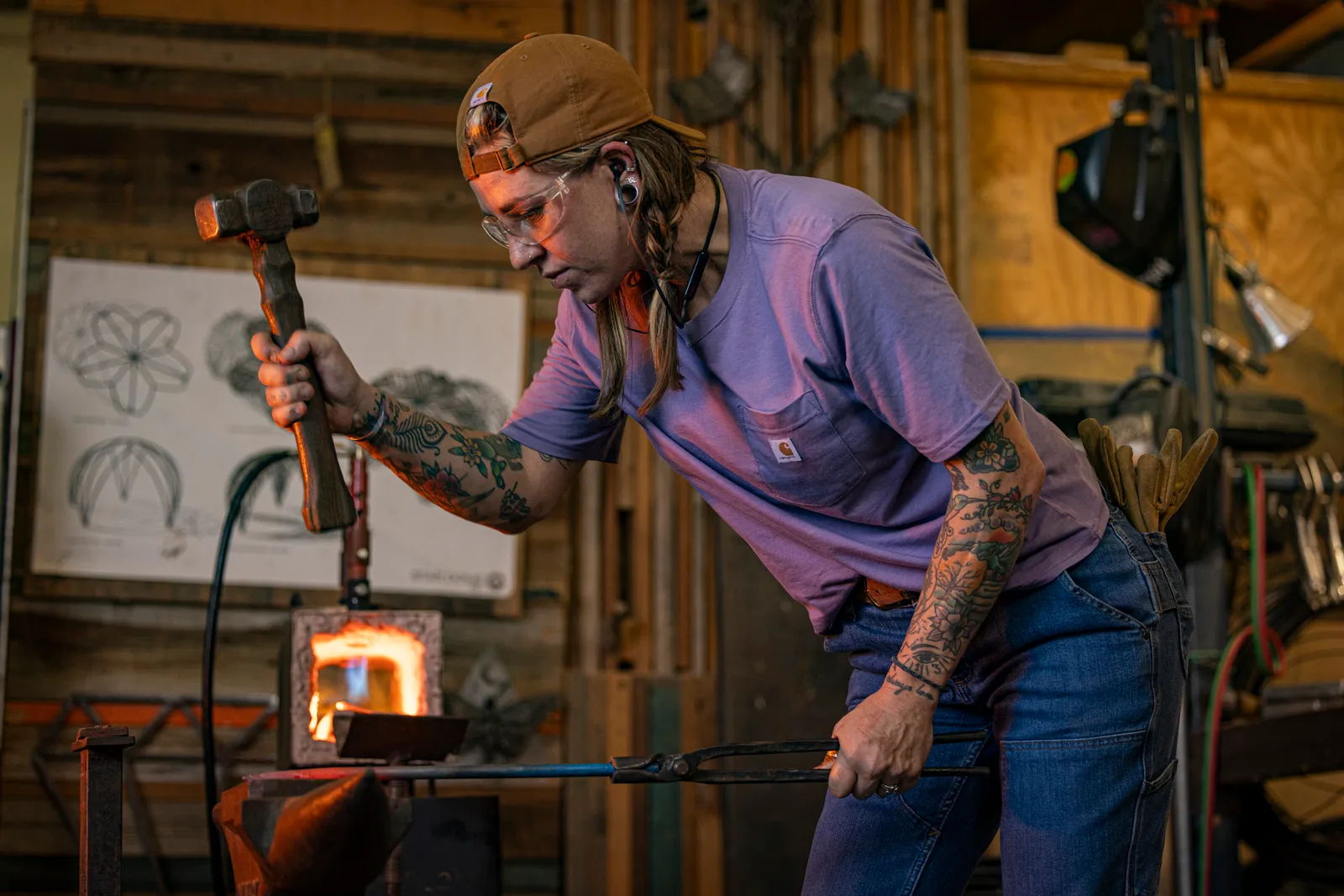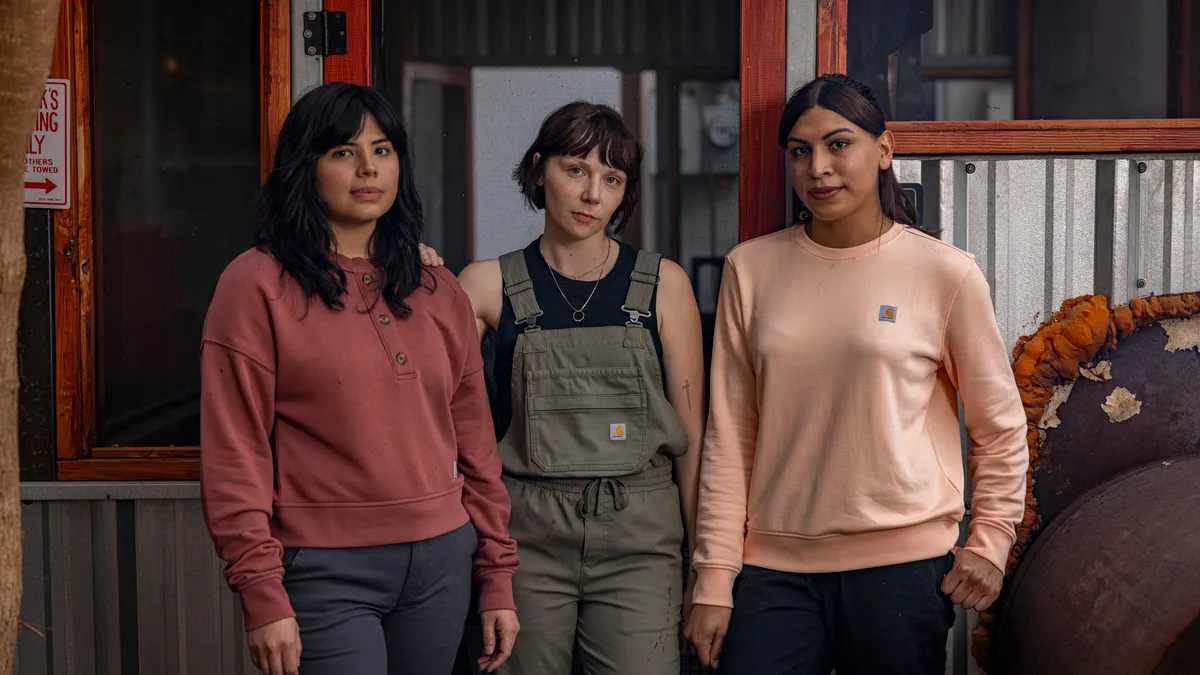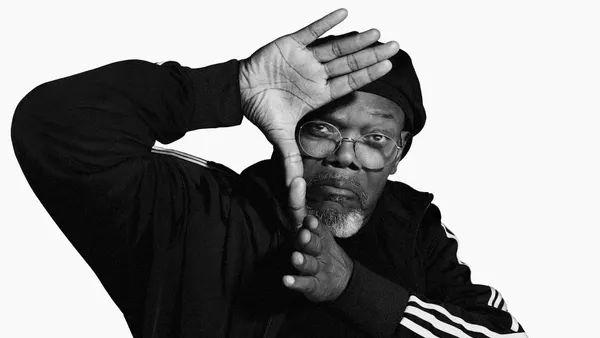Carhartt, whose roots reach back to 1889, has long been known for men’s workwear and a rugged aesthetic. Core products like the Chore Coat, introduced in the early 1900s, are still sold today, touting “rugged firm-hand duck fabric.” The e-commerce site advertises “legendary tough jackets, bibs, hoodies, and tees,” which have remained a core part of its offering even as its clothing became popular as streetwear.
This spring, however, the company is looking to make a name for itself in women’s, which accounts for just 15% of the business, but is one of its fastest growing segments. Long term, the company hopes to expand that penetration to 30%.
“They are entering the trades,” Carhartt Chief Brand Officer Susan Hennike said of women, who are often aware of Carhartt but might be more familiar with it for family buying purposes. “They're entering into construction and they continue to enter into healthcare now more than ever. So we have some really great stats that show that she's entering into this field where we have such an opportunity, as we do in men’s, to be the leader in the workwear for her.”
Carhartt is not new to women’s — the brand sold women’s coveralls for industry workers in 1917 and launched a full line of women’s products in 1998 — but the company’s latest offering represents “a more concerted effort” to focus on that customer base, according to Samantha Denton, vice president of the women’s business at Carhartt. The new line features T-shirts and sweatshirts made with Tencel, a fiber that is lightweight, breathable and soft.
Those are not usually words that go hand in hand with Carhartt’s rugged aesthetic; the brand’s website on Wednesday featured a banner advertising outerwear “built to attack winter.” But comfort and versatility were two things women asked specifically for, and Carhartt’s new line does so without sacrificing durability, Denton said. The idea was to create clothing that was durable enough for women to wear to work sites, but comfortable and stylish enough to take grocery shopping or to drop the kids off at school, a focus she calls “redefining what hard work looks like for women.”
“Carhartt’s known for cold weather, heavy, rugged gear,” Denton said, noting that Carhartt’s lighter products aimed at warmer climates have to fight the perception that “we're cheapening out the fabric. That is quite honestly the opposite of what's happening because we're doing so much research and development to create lighter weight and softer fabrics that are just as durable.”
Jo James, the director of women’s design at Carhartt, added that the new line passes the same testing standards as everything else the company produces — and men’s and women’s products have the same durability standards.
“To skilled trade workers, their primary need is actually credibility,” Denton said. “They want to make sure that they have the gear that's like-for-like on the men's on the job — because they're doing the same exact job.”

Many women in trade jobs years ago were buying men’s products because of the limited women’s offerings, James said, which can be dangerous because the products fit looser. Well-fitting clothing that is designed for a woman’s body: “that equals safety on the job,” James said.
While a softer clothing line could help Carhartt’s appeal in the streetwear space, executives said they don’t really consider that consumer.
“We like to say we're trend aware, but not trendy. One of the easiest parts of my job is we always start with the job site in mind,” James said. “That keeps us true to who we are … We love that more and more people love to wear our product, but we're here — number one — for the worker.”
Performance on the job site is critical to Carhartt’s success, because the job site is also where workers pass on word-of-mouth recommendations. The design teams regularly visit job sites to gather feedback, a practice that dates back to founder Hamilton Carhartt, whose conversations with railroad workers changed the design of his first products. Hennike said Carhartt has a full team dedicated to consumer insights and the new Tencel line is a women’s-only initiative to cater to the feedback Carhartt has heard. The brand is already planning lightweight joggers and workpants, and Hennike said Carhartt is looking closer at women’s denim and outerwear.
“The only thing that's changed is just what we describe as work,” Hennike said of Carhartt’s evolution over the years. “We still have plumbers, we have electricians … but now we're looking at solar farms, we're looking at manufacturing.”
Healthcare, too, is a big space for female workers, which led Carhartt into developing scrubs.
So while the latest line is softer, it’s not fragile. “It’s lighter, it’s softer, it’s tougher,” Denton said. “That’s kind of our headline right now.”














